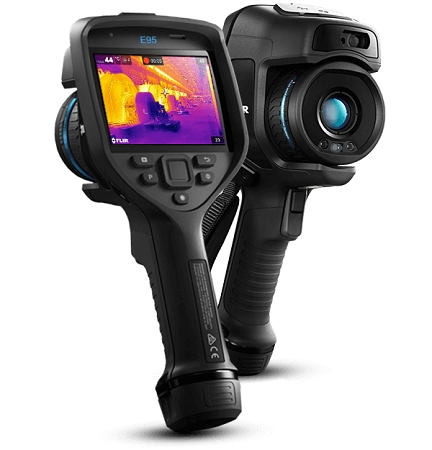thermal imaging home inspections
What is thermal imaging?
A thermal imaging camera uses infrared technology to see small differences in the temperature of an object. It is used primarily in home inspections to help identify hidden moisture intrusion, and air leaks within the building envelope. When things are wet, they are usually colder than their surroundings, which shows up as a different color on the camera. Sometimes these differences are only a few degrees, but the damage cannot be seen with the naked eye.
Thermal image scanning technology has been used to evaluate residential and commercial structures for years. It’s a non-invasive testing tool that can quickly help discern where there are suspected problems. This can help limit the areas where time consuming further evaluation is needed.
Uses of Thermal Imaging in Home Inspections
Below are a few examples of thermal imaging shots taken during a home inspection. Be sure you follow me on Instagram for a daily dose of home inspection craziness.
How can a thermal imaging camera help during your home inspection?
Moisture Intrusion – As we talked about, thermal imaging is not a moisture meter, but it does do a great job at finding hidden moisture damage. Windows and doors are notorious for leaking when not properly installed. Things like chimney flashing, and roof penetrations are also problem areas. Most of the time these issues will go unnoticed without thermal imaging.
Energy Audits/Missing Insulation – When used in conjunction with a blower door test, the thermal camera shines like a shooting star. All of the building envelope’s leaks glow like Christmas lights. However, you do not have to have a blower door running to reap the benefits of thermal imaging. As long as there is a moderate temperature difference between inside and outside, you can see those air leaks.
Plumbing Leaks – It seems that once a week I find a leaking bathroom drain with my camera. I always run lots of water during my inspections, and you would be shocked at the amount of wet drywall I find (think a two-story home with a bathroom upstairs). These water lines can leak and drip down onto the drywall ceiling below, and depending on how much water is leaking, it can take a long time to stain and show up. The thermal camera can pick up on this leak long before it manifests itself.
Electrical Hot-spots – Heat is a byproduct of electricity when it is used through a device. When you use an electrical outlet, it gets warm, the breaker in the panel also gets warmer as it has electricity flowing through it. With the use of thermal imaging, you can see this heat in a picture format. Excessive temperatures could mean loose connections or faulty breakers. Both of these can cause serious problems like a fire or someone getting electrocuted.
WHAT DOES IT COST TO HAVE A THERMAL IMAGING SCAN PERFORMED?
The use of thermal imaging in building and home inspections is a game-changer. Although remember, it does not see moisture, and it is not X-Ray. However in conjunction with other high-end equipment such as my Tramex MEP, and GE Protimeter moisture meters it rounds off a slew of tools that give me the best chance at finding problems for you.
While I do not charge extra to use my thermal camera on any given home inspection to help verify known problem areas, I typically do not scan every inch of every house. It would add too much time to an already long inspection.
To scan, document, and report on a whole house with thermal imaging would take just as long, or longer than the home inspection itself. Usually 4+ hours. If you want a whole-home scan performed on your house during the inspection process, I can do that, but an extra fee will be assessed.
If you have any questions about thermal imaging please feel free to give me a ring at 502.938.5190, or you can email me here.


